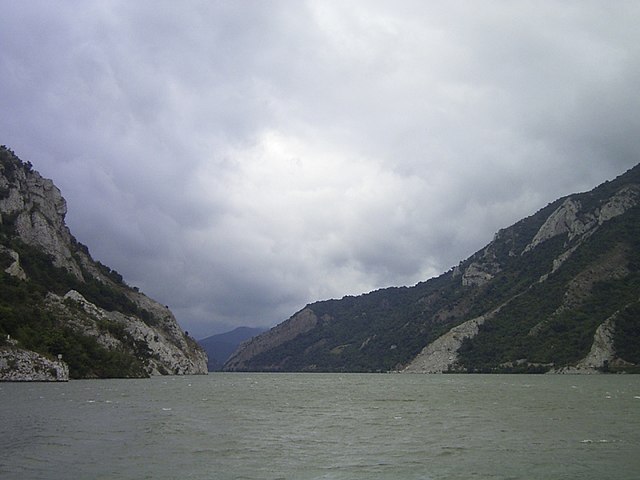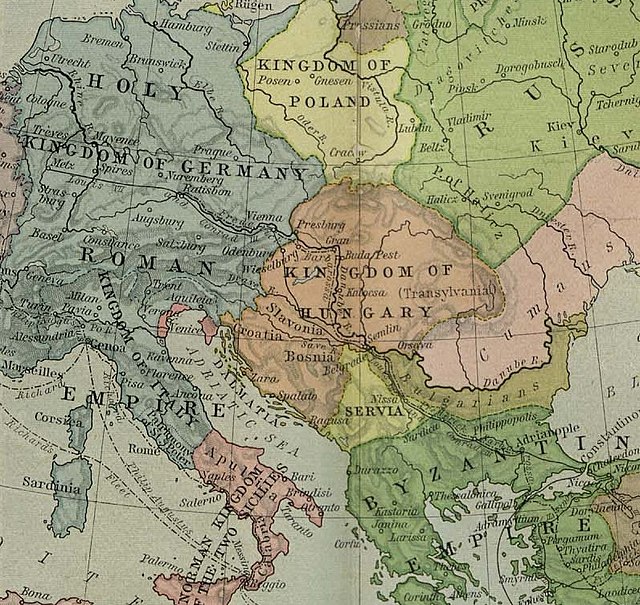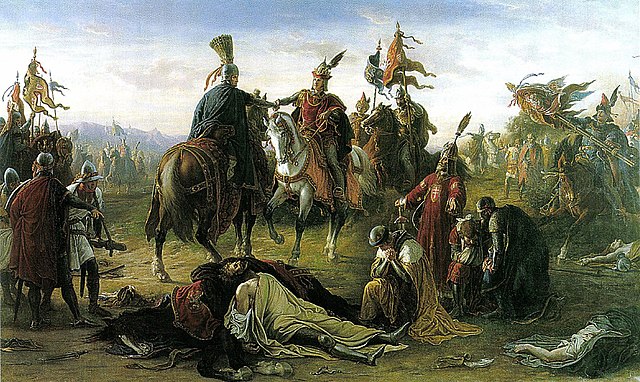The Battle of Nicopolis took place on 25 September 1396 and resulted in the rout of an allied Crusader army of Hungarian, Croatian, Bulgarian, Wallachian, Polish, French, Burgundian, German, English, Knights Hospitaller, Iberian, Italian, Bohemian, Serbian and Byzantine troops at the hands of an Ottoman force, raising the siege of the Danubian fortress of Nicopolis and leading to the end of the Second Bulgarian Empire. It is often referred to as the Crusade of Nicopolis as it was one of the last large-scale Crusades of the Middle Ages, together with the Crusade of Varna in 1443–1444. By their victory at Nicopolis, the Turks discouraged the formation of future European coalitions against them. They maintained their pressure on Constantinople, tightened their control over the Balkans, and became a greater threat to Central Europe.
miniature by Jean Colombe (c. 1475)
The Battle of Nicopolis, as depicted by Turkish miniaturist Nakkaş Osman in the Hünername, 1584–1588
The crusaders took eight days to cross the Danube at the Iron Gate
Titus Fay saves King Sigismund of Hungary in the Battle of Nicopolis. Painting in the Castle of Vaja, creation of Ferenc Lohr, 1896.
The Kingdom of Hungary was a monarchy in Central Europe that existed for nearly a millennium, from the Middle Ages into the 20th century. The Principality of Hungary emerged as a Christian kingdom upon the coronation of the first king Stephen I at Esztergom around the year 1000; his family led the monarchy for 300 years. By the 12th century, the kingdom became a European power.
King Stephen I of Hungary
The Holy Crown of Hungary along with other regalia
Hungary (including Croatia) in 1190, during the rule of Béla III
The Meeting of Ladislaus IV and Rudolf I during the Battle on the Marchfeld, painting by Mór Than (1873)







